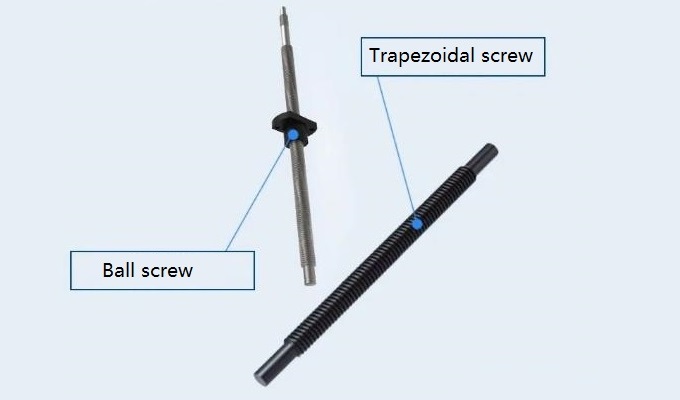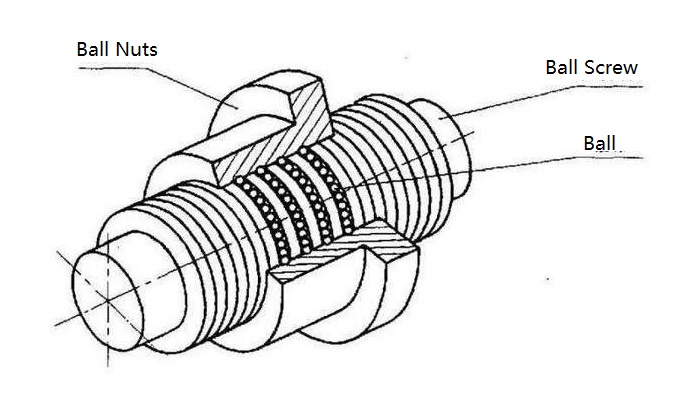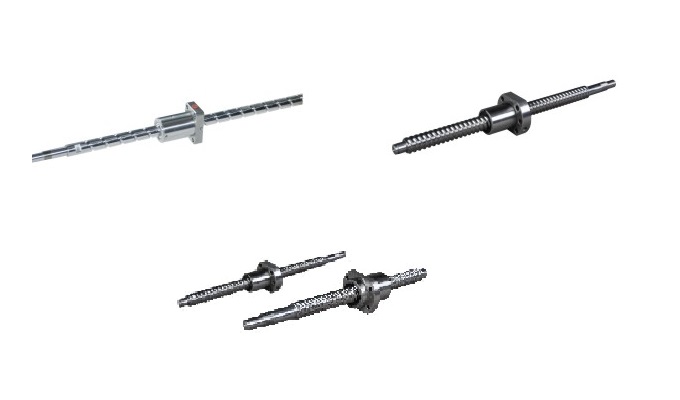In the realm of engineering and mechanical design, the choice of ball screws plays a pivotal role in ensuring the smooth and efficient functioning of various systems, from general machinery to high-precision CNC equipment. Ball screws, with their ability to convert rotary motion into linear motion with minimal friction, are indispensable components in a wide array of industrial applications.
To make an informed decision during the selection process, it is essential to grasp the key parameters that influence the performance and capabilities of ball screws. These parameters, including the nominal diameter, lead, length, nut type, and precision, are pivotal factors that determine load capacity, linear speed, and positioning accuracy. Understanding these parameters in-depth is crucial for engineers and designers seeking to optimize the performance and reliability of their mechanical systems.
This comprehensive guide aims to provide a detailed understanding of the critical parameters involved in the selection process of ball screws. By delving into the significance of each parameter and its implications for specific applications, this guide seeks to empower engineers and industry professionals with the knowledge necessary to make informed decisions, ensuring the seamless integration of ball screws in their designs for optimal performance and longevity.

During the selection process of ball screws, the main parameters to consider for the ball screws themselves are as follows:
1. Nominal Diameter
Refers to the external diameter of the screw, with common specifications including 12, 14, 16, 20, 25, 32, 40, 50, 63, 80, 100, 120. It's important to note that manufacturers generally stock products in the range of 16-50, while other diameters are mostly made to order with lead times approximately ranging from 30 to 60 days. Nominal diameter is generally proportional to the load capacity, with larger diameters accommodating heavier loads. For specific values, consult the manufacturer's product samples. It is advisable to select a diameter between 16 and 63.
2. Lead
Also known as pitch, it represents the linear distance the nut travels with one complete rotation of the screw. Common lead options include 1, 2, 4, 6, 8, 10, 16, 20, 25, 32, 40. Stock products generally offer 5 and 10 for medium and small leads, while larger leads such as 1616, 2020, 2525, 3232, 4040 are typically made to order by most manufacturers. Lead is related to linear speed, with larger leads resulting in higher speeds. It is recommended to choose leads of 5 or 10.
3. Length
There are two concepts of length: overall length and threaded length. Some manufacturers only consider the overall length, while others need to provide the threaded length. Threaded length comprises the total length of the thread and the effective stroke.
The length of the thread is calculated as the sum of the effective stroke, nut length, design margin (considering the compression length of the protective cover, generally calculated as 1/8th of the maximum length of the protective cover). During the design phase, the total length of the screw can be approximately calculated by adding the effective stroke, nut length, design margin, the length of support at both ends (bearing width + lock nut width + allowance), and the length of the power input connection (if using a coupling, approximately half the length of the coupling + allowance).
It is particularly important to note that if the length exceeds 3 meters or the length-to-diameter ratio is greater than 70, it is advisable to consult the manufacturer's sales personnel in advance to confirm the possibility of production. Generally, conventional products from domestic manufacturers have a maximum length of 3 meters and special products of 16 meters, while foreign manufacturers offer conventional products of 6 meters and special products of 22 meters. It is recommended to select lengths of 6 meters or less; for lengths exceeding this, it is more cost-effective to use gear racks.
4. Nut Type
Product samples from various manufacturers present multiple nut forms, with the initial letters of the model number representing the nut type. Flange forms include circular flanges, single-cut edge flanges, double-cut edge flanges, and no flanges. Based on nut length, there are single and double nut types. It is essential to note that single and double nuts do not differ in terms of load and rigidity, contrary to what may be suggested by sales personnel.
The primary difference between single and double nuts is that the latter allows for preload adjustment while the former does not. Additionally, the price and length of the latter are roughly twice that of the former. It is advisable, whenever possible, to select standard forms during the selection process to avoid issues with spare parts lead time during maintenance. For applications involving frequent motion and high precision maintenance, choose double nuts, while for other applications, choose double-edged single nuts. It is recommended to opt for an internal circulation double-cut edge flange single nut form whenever possible.
5. Precision
Ball screws are classified into P and T classes according to GB standards, representing transmission and positioning classes, with precision levels ranging from 1, 2, 3, 4, and so on. Foreign products generally do not distinguish between transmission and positioning and are represented uniformly by C0 to C10 or specific numerical values. Generally, for general machinery or ordinary CNC machinery, select C7 (positioning error within any 300 strokes is ±0.05) or below.
For high-precision CNC machinery, choose C5 (±0.018) or higher, and for optical or inspection machinery, choose C3 or higher. It is essential to note that there is a significant correlation between precision and price. Moreover, the concept of precision pertains to both assembly and maintenance, indicating that the error of the lead screw cannot fully represent the error of the entire ball screw assembly. The fact that the factory precision is qualified does not guarantee the maintenance of this precision within the rated service life. This is a matter of reliability and is related to the manufacturer's production process.
The aforementioned parameters are the primary ones to consider during the selection process. Additionally, the following parameters need to be taken into account: the number of ball circuits, ball diameter, manufacturing method code, and preload level.

6. Number of Ball Circuits
This parameter is generally indicated after the lead in the model number, for instance, 4010-4, where the "-4" signifies the number of ball circuits. Discussing the concept of cycle method may be complex; however, users can understand it simply as the number of cycles the rolling elements complete. A larger value signifies a greater load-bearing capacity and longer nut length.
7. Ball Diameter
This parameter refers to the diameter of the rolling elements. While it may not be apparent in the model number, it is indicated in the technical parameter tables of various manufacturers. It is generally related to the nominal diameter and lead, and users need not concern themselves with it. However, for some users, if improper use causes the ball to fall out of the nut and requires reinstallation, this parameter becomes important to consider. The dimensions are generally precise up to 0.001.
8. Manufacturing Method Code
Ball screws are primarily manufactured using two methods: rolling and grinding. The former is also known as rolling manufacture or transformation and is generally denoted by "F," while the latter is known as grinding manufacture, denoted by "G." Due to differences in the manufacturing process, the two methods achieve different levels of precision. Currently, the highest precision that can be achieved by the rolling method is C5. As far as I know, only Han Yi can achieve this precision. Grinding can produce even higher precision products. However, it is essential to note that the two manufacturing methods do not have a direct causality with precision and performance. In other words, if you choose a precision of C7, it does not matter how it was manufactured.
Rolling belongs to batch production, while grinding belongs to precision manufacturing. The production efficiency of the former is much higher than that of the latter, but the manufacturing equipment cost of the former is also much higher than that of the latter. In other words, the entry threshold for grinding screws is lower, while the entry threshold for rolling production is higher. Manufacturers that can produce rolling screws can generally also produce grinding screws, but manufacturers that can produce grinding screws may not necessarily produce rolling screws. Therefore, if the same precision product is available in the rolling version, it is advisable not to choose the grinding version for the simple reason that it is more cost-effective. Additionally, it should be clarified that rolling and grinding only refer to the lead screw, while the nut is entirely manufactured by grinding.
9. Preload
Also known as pretension, users do not need to know the specific preload force and preload method. It is sufficient to select the preload level according to the manufacturer's samples. The higher the level, the tighter the fit between the nut and the screw, and the lower the level, the looser the fit. The principle to follow is to select a slightly higher preload level for scenarios involving a large diameter, double nuts, high precision, and large driving torque, and a lower level for the opposite scenarios.
Conclusion
Selecting the right ball screws for a particular application involves a careful consideration of various parameters, ranging from nominal diameter and lead to nut type and precision. Each of these factors contributes significantly to the overall performance, load capacity, and precision of the system. By understanding the nuanced relationship between these parameters and the specific requirements of a given application, engineers and designers can make informed choices that lead to the optimal functioning and longevity of their mechanical systems.
Moreover, the importance of consulting with manufacturers and understanding their product offerings, lead times, and customization options cannot be overstated. Collaboration with knowledgeable sales personnel can provide valuable insights and ensure the smooth integration of the selected ball screws into the overall design.
In an ever-evolving industrial landscape, where precision, efficiency, and reliability are paramount, a comprehensive understanding of ball screw parameters is essential for achieving desired performance outcomes. By applying the knowledge gained from this guide, engineers can navigate the complexities of ball screw selection and pave the way for the successful implementation of these crucial components across various mechanical applications.




